카림 하비브와의 대화: 꿈이자 로맨스
A Conversation with Karim Habib: A Dream and a Romance
2021년 기아의 새로운 디자인 철학이 알려졌다. 2006년 디자인 경영에 출사표를 던지고, 이듬해 ‘직선의 단순화(The simplicity of the straight line)’를 공표한 지 15년 만이다. 모빌리티 산업에 역점을 두고 새로운 도약에 박차를 가하는 기아의 디자인 철학은 ‘상반된 개념의 창의적 융합(Opposites United, OU)’이다. 여러 번 곱씹어 생각하게 되는 만큼 그 해석 또한 무궁하다. OU의 철학을 실현하고자 하는 기아 디자인센터에는 자동차를 사랑하는 ‘카 가이즈Car Guys’가 있다. 2019년부터 이곳에서 기아의 디자인 혁신을 주도해오고 있는 카림 하비브Karim Habib 기아 디자인센터장은 “저는 말 그대로 지금 우리가 디자인하는 자동차와 사랑에 빠졌습니다”라고 당당히 고백한다. 그를 만나 개인적인 이동의 경험부터 디자인에 대한 견해까지 진솔한 이야기를 나눴다. 상반된 개념의 창의적 융합이라는 기아 디자인 철학이 비롯하게 된 친밀하고도 풍부한 힌트가 그의 생각 이곳저곳에 묻어났다.
In 2021, Kia released its new design philosophy. 15 years passed since the company launched design management in 2006 and announced its design philosophy “The Simplicity of the Straight Line” the following year. Accelerating a new leap focusing on the mobility industry, Kia’s new design philosophy is “Opposites United (OU).” As we contemplate it over and over again, it can be interpreted in countless ways. At the Kia Design Center for realizing the philosophy are “car guys” who love automobiles. Having led Kia’s design innovation since 2019, the head of the Kia Design Center Karim Habib proudly confesses, “I literally fall in love with vehicles we are designing at the moment.” Kia Design Magazine had some honest conversation with him on various topics, ranging from personal mobility experience to his opinions about design. In his thoughts, we were able to find familiar and abundant hints regarding Kia’s design philosophy for the creative convergence of opposite concepts.
“저는 말 그대로 지금 우리가 디자인하는
자동차와 사랑에 빠졌습니다”
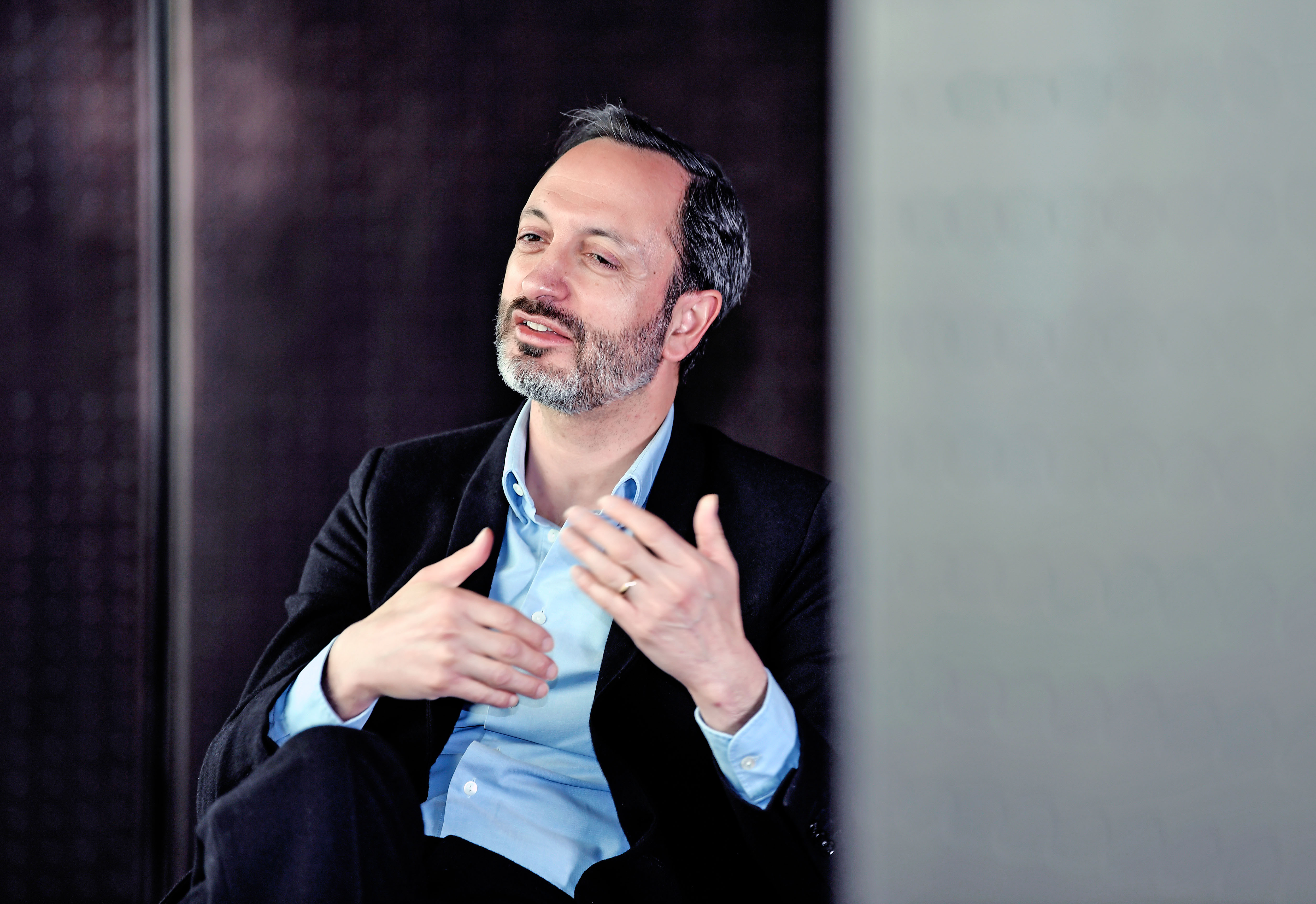
애정하고, 친근하며, 만들고 싶은
미래에 대한 낙관주의와 기대감이 팽창하던 1960년대의 독특한 자동차들이 있듯, 차는 그 시대의 영향을 반영한다. 오늘날의 탈 것은 무엇을 반영하고 있을까? 자동차 디자이너에게 지금 가장 사랑하는 차를 묻는다면 그것은 아마도 아직 만들어지지 않은 차가 아닐까. 매일 더 나은 탈 것, 더 혁신적인 탈 것을 고민하는 이들에게 ‘작업 중인 차’ 만큼 기대되는 탈 것은 없을 것이다. 하비브에게 가장 애정하는, 동시에 만들고 싶은 차는 무엇인지 물었다.
Favorite, Familiar, Creative
Just as there were unique cars coming out in the 1960s, when optimism and expectations for the future were expanding, cars reflect the impact of an era. What do today’s vehicles reflect? If you ask a car designer about his favorite car, maybe it is a car that hasn’t been made yet. For those who think about better and more innovative vehicles every day, there is nothing more exhilarating than a car that they are currently working on. We asked what his favorite vehicle is and what kind of car he wants to make more than any other.
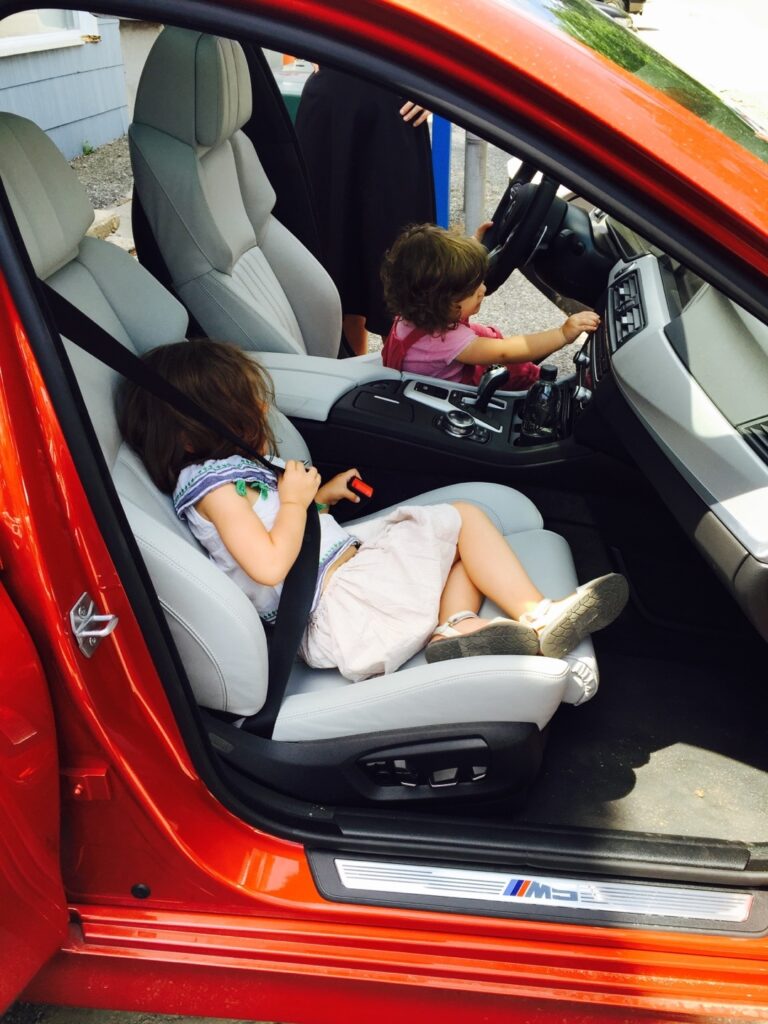
“제가 가장 아끼는 차는 제가 매일 출근하는 차죠. 물론 브랜드는 기아입니다. 매일 서울에서 남양 기아 디자인센터까지 왕복 110km 거리를 왕복해요. 그리고 역시 가장 만들고 싶은 차 역시 지금 기아 디자인센터에서 새롭게 시도하고 있는 자동차예요. 차를 매일 사용하는 동시에 그 차를 디자인하는 것은 저를 비롯한 카 가이즈의 일상이니까요. 아직 우리는 자동차 하면 전형적으로 떠올리는 사물이 있어요. 하지만 자동차라고 했을 때 ‘움직이는 거실’을 떠올려볼 수도 있지 않을까요? 이처럼 이미 틀에 짜여진 사고를 벗어나 창조적으로 접근하는 방법을 찾는 일이, 우리가 자동차의 미래를 디자인하는 일이라고 생각해요.”
“My favorite car is the one I use for commuting every day. Of course, it’s a Kia. I commute 110 km from Seoul to the Kia Design Center in Namyang and back to Seoul. The car that I want to make the most is a new car that we are working on now at the Kia Design Center. Designing cars while using cars every day is day-to-day life for “car guys” like me. There are typical objects that come to mind when thinking of a car, but maybe you can imagine a moving living room. As such, I think it is our job to design the future of the car, and find a creative approach by thinking outside of the box.”
“이미 틀에 짜여진 사고를 벗어나 창조적으로
접근하는 방법을 찾는 일이, 우리가 자동차의
미래를 디자인하는 일이라고 생각해요.”
매번 새로운 이동의 경험
이동의 경험은 늘 소중하고, 예측 불가능하며, 다채롭다. 때로는 목적지에 도착하는 것보다 이동하는 상태 그 자체가 매력적이다. 그만큼 이동은 무척 신체적이고도 정신적인 일이다. 쉼 없이 자동차에 대해 생각하고, 그 아이디어를 실현하는 것을 소명으로 삼는 하비브에게 이동의 경험은 어떤 의미로 자리매김하고 있을지 궁금했다.
“지금 이곳, 기아 디자인센터에 있는 분들에게 자동차는 일종의 로맨스이기도 해요. 누구나 이동을 하고, 소박하지만 멋진 자기만의 길을 가지고 있을 거예요. 그리고 때로는 잠시 멈춰서 무언가를 발견하죠. 언젠가 독일에서 이탈리아 중부로 여행을 떠난 적이 있어요. 저는 당시 정말 오래되고 낡고 작은 자동차를 가지고 있었어요. 알프스산맥을 넘어서자마자, 비가 내리고 폭우가 쏟아졌어요. 그런데 갑자기 와이퍼가 튀어나와 멈춰버렸지 뭐예요. 아찔했지만 저는 그 시간이 정말 좋았어요. 무언가를 발견하는 시간이 되었으니까요. 그것이 바로 이동하는 일의 꿈이자 로맨스가 아닐까 싶어요.”
A New Mobility Experience Every Time
The experience of movement or mobility is always precious, unpredictable, and diverse. Sometimes the state of moving itself is more attractive than arriving at the destination. As a result, movement is both physical and mental. What is the meaning of mobility experience for Habib, whose calling is to constantly think about cars and make ideas a reality?
“The car also represents a kind of romance for those working at the Kia Design Center right now. Everyone moves and each person probably has their own modest yet wonderful road to take. They then pause to find something. Once I traveled from Germany to the middle of Italy. At the time, I had a really old, tiny car. As I traveled over the Alps, it rained heavily, which is when the windshield wipers popped out and stopped working. I felt dizzy, but that moment was wonderful. You discover things, and you learn things. Such a moment is the dream and romance of moving.”
“그것이 바로 이동하는 일의 꿈이자
로맨스가 아닐까 싶어요.”
I SEOUL ‘OU’
OU는 ‘상반되는 것들(Opposites)’ 사이를 발견하는 것으로부터 시작된다. 그리고 이 대조와 모순은 지금 서울을 비롯한 대도시에서도 수없이 목격할 수 있다. 오래된 것과 새로운 것이 공존하는 도시에는 파괴와 창조가 서로를 견주며 끝없이 진행 중이다. 하비브의 눈에 들어온 도시의 상반된 전경은 어떤 것이었을까. 이 관찰과 발견이 이루어지는 장소는 기아의 디자인 철학이 기아의 사용자들과 관계 맺는 곳이기도 하다.
Opposites United in Seoul
OU starts with finding the distance between opposing elements. And countless examples of such contrasts and contradictions can be found in megacities around the world, including Seoul. In cities where old and new coexist, destruction and creation are competing and constantly going on. What were some OU cases in cities that Habib recently discovered? The places of such observations and discoveries are also where Kia’s design philosophy forms a relationship with users of Kia automobiles.
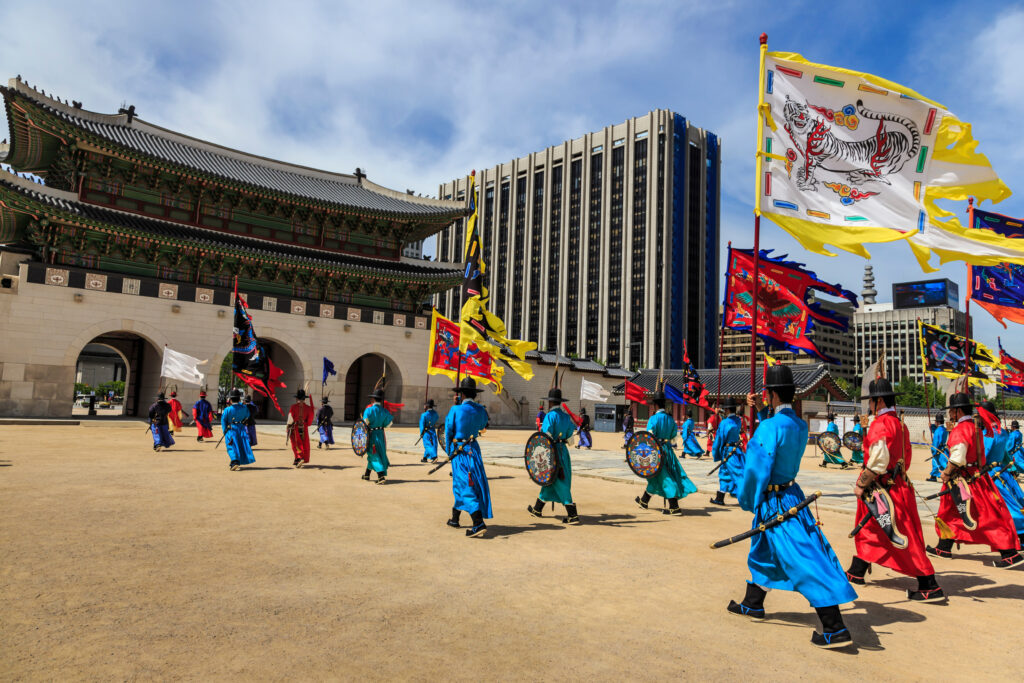
“무릇 도시에는 오랜 역사가 있고, 한편으로는 전통이라던가 과거를 존중하지 않는 것처럼 보이는 문화의 또 다른 부분이 공존하는 것 같아요. 과거에 대한 일종의 파괴적인 시각도 있고, 흥미로운 부분이라고 생각해요. 경복궁에 갔을 때, 인왕산 방면을 바라보면 수백 년 전의 시대가 보여요. 그렇지만 뒤로 돌아보면 1000만 명이 사는 도시를 볼 수 있죠. 이처럼 서로 다른 차원의 사회나 문화적 양식이 공존하는 장면을 볼 수 있는 것은 그 자체로 매력적인 일이에요.”
“In general, a city has a long history, and certain traditions coexist with another part of the culture that doesn’t seem to respect the past. There is kind of a destructive view towards its own past in certain ways, which I find interesting. When you are in Gyeongbokgung Palace—and if you look at Inwangsan Mountain—it reminds you of a past era from hundreds of years ago. However, when you turn around, you see this city of 10 million people. I find it really fascinating to see such a scene where different dimensions of social and cultural patterns coexist.”
디자인이 ‘디자인’ 하는 것
때때로 디자인은 사람의 행동을 고무시키고, 삶의 양식을 바꾸는 일이 된다. OU는 통념적인 사고방식이나 가치관을 다른 차원으로 올려놓는다. 그런 면에서 디자이너에게 있어 디자인 철학은 디자인의 외형만이 아닌 디자인을 위한 내적 동기에까지 영향을 미칠 수밖에 없다.
What Design Designs
Sometimes design inspires human behavior and changes people’s lifestyles. OU elevates conventional ways of thinking or views to a whole new level. In that sense, for designers, design philosophy cannot help affecting both the design outcomes and their motivation for designing.
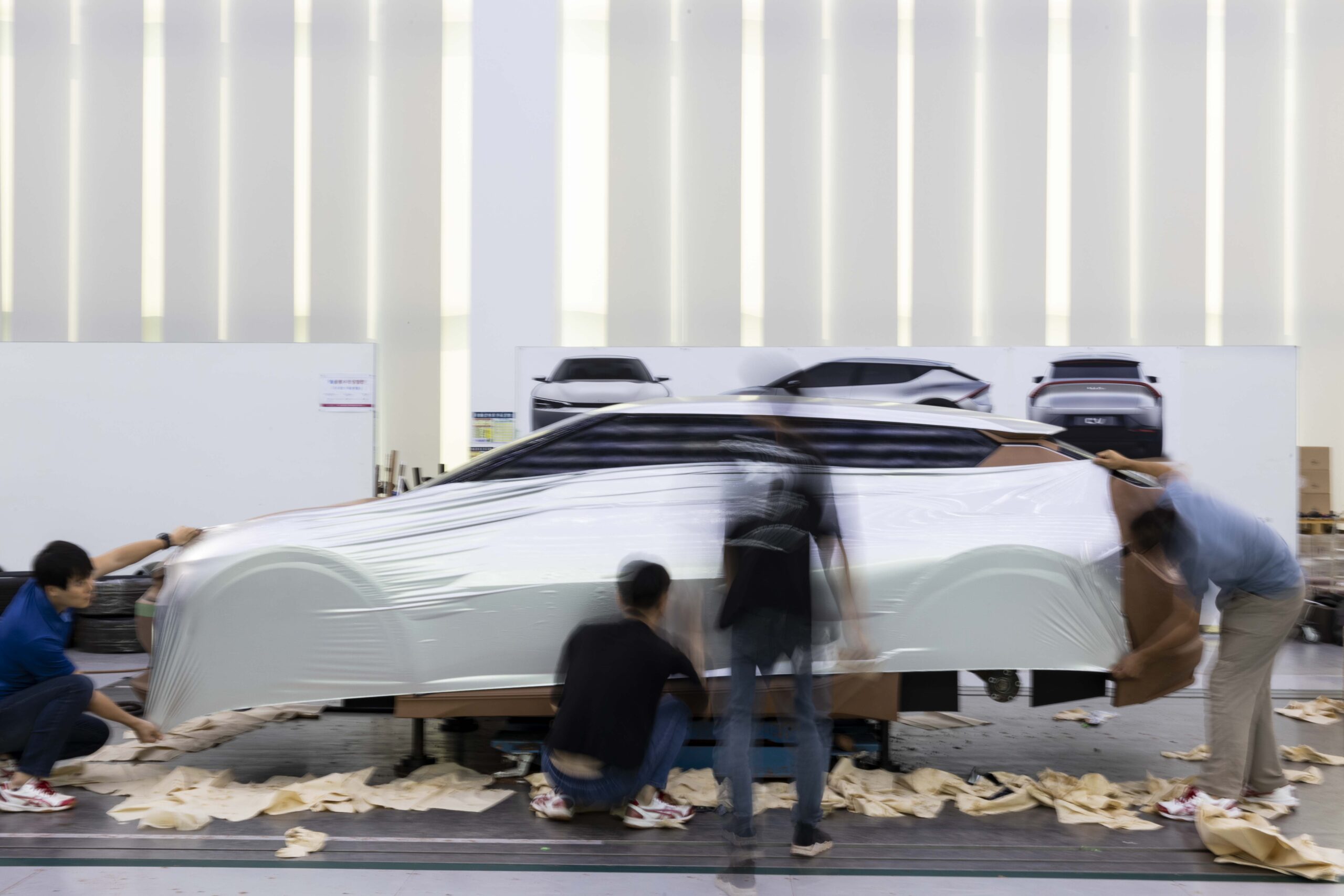
“OU는 단지 시각적 은유에 그치지 않는다고 믿어요. 한 단위, 한 도시, 또는 한 국가에서도 문화적 수준과 경제적 수준의 차이에서 일어나는 대비적인 모습을 볼 수 있어요. 삶이 항상 그래왔는지도 모르지만, 어쩐지 오늘이 과거보다 더 극단적으로 느껴지지 않나요? 아마도 우리가 많은 정보를 너무 잘 알고 있는 만큼, 대조와 모순을 쉴 새 없이 감지하기 때문일 것 같기도 해요. 그래서 저는 OU가 단지 디자인의 형태에 관한 것이 아니라, 어떻게 어떤 것을 다루고, 어떻게 문제를 해결할 것인가에 대한 원리에 관한 것이며, 대비와 역설을 어떻게 받아들일 것인가에 관한 내용이라고 생각해요. 이 과정이 우리가 만들어내는 것으로 이어지길 바라고 있어요.”
“I believe OU is not just a visual metaphor. Even as a unit, in one city or one country there are a lot of contrasts in things that happen at the cultural level and at the economical level. I don’t know if life has always been like that, but somehow doesn’t today’s world seem more extreme than in the past? Maybe it’s because we are so aware of all things and we constantly sense contrast and contradiction. That’s why I think OU is not just about designing shapes, but about the principle of how to address something, and how to tackle a problem and to accept the contrast and the paradox. I hope this process will lead to our creations.”
“저는 OU가 단지 디자인의 형태에 관한 것이
아니라, 어떻게 어떤 것을 다루고, 어떻게 문제를
해결할 것인가에 대한 원리에 관한 것이며,
대비와 역설을 어떻게 받아들일 것인가에 관한
내용이라고 생각해요.”
기술과 인류 사이의 번역자
디자인은 상반되는 것들 사이를 잇는다. 그만큼 세상의 거의 모든 곳에서 디자인의 역할을 발견하는 일은 어렵지 않다. 그렇다면 디자인은 항상 무언가를 매개하는 역할일까? 아니면 디자인은 무언가를 매개하는 역할이 아니라 그 자체로 존재하는 것일까?
A Translator between Technology and Humankind
Design connects between the opposites. As such, it is not difficult to discover the role of design almost everywhere in the world. If this is the case, is design always a medium for something? Or does design exist in and of itself, not playing the role of mediating something?

“디자인의 역할이란 디자인을 어떻게 보는지, 디자이너의 유형에 따라서도 달라지는 이야기라고 생각해요. 산업 디자인에 있어서, 사람들이 사용하는 제품은 수백, 수천 개의 유닛으로 만들어져요. 그만큼 디자인은 기술과 인류 사이의 번역자에 가깝다고 생각해요. 하지만 이 개념도 빠르게 바뀌고 있는 게 사실이에요. 특히 디지털 경험은 산업 디자인에서도 점점 더 중요해지고 있어요. 경험을 디자인하고 감정과 상호 작용을 디자인한다는 점에서 말이죠. 어떤 면에서는 관계와 공감 그 자체가 디자인의 의도가 되기도 하죠. 사용자와 제품, 그리고 브랜드 사이의 공감, 이 주체들 사이에서 일어나는 대화가 디자인이라고 볼 수도 있을 것 같아요. 그만큼 디자이너에게 그 생각의 주도성을 넘기고 싶기도 하고요.”
“The role of design depends on how I see the design or what type of designer I am. When it comes to industrial design, a product that is meant to be used by people can be made of hundreds or thousands of units. Therefore, design is almost a translator between technology and humankind. In fact, however, this concept is also rapidly changing. A digital experience has become more and more important even in industrial design recently, just as our experiences, emotions, and interactions are designed. Somehow, relationships and empathy become the intention of the design. The empathy between users, objects and the brand—as well as the dialogue that happens between all of these things—can be seen as design. I would like to give designers the initiative in thinking.”
“사용자와 제품, 그리고 브랜드 사이의 공감,
이 주체들 사이에서 일어나는 대화가 디자인이라고
볼 수도 있을 것 같아요. 그만큼 디자이너에게
그 생각의 주도성을 넘기고 싶기도 하고요.”
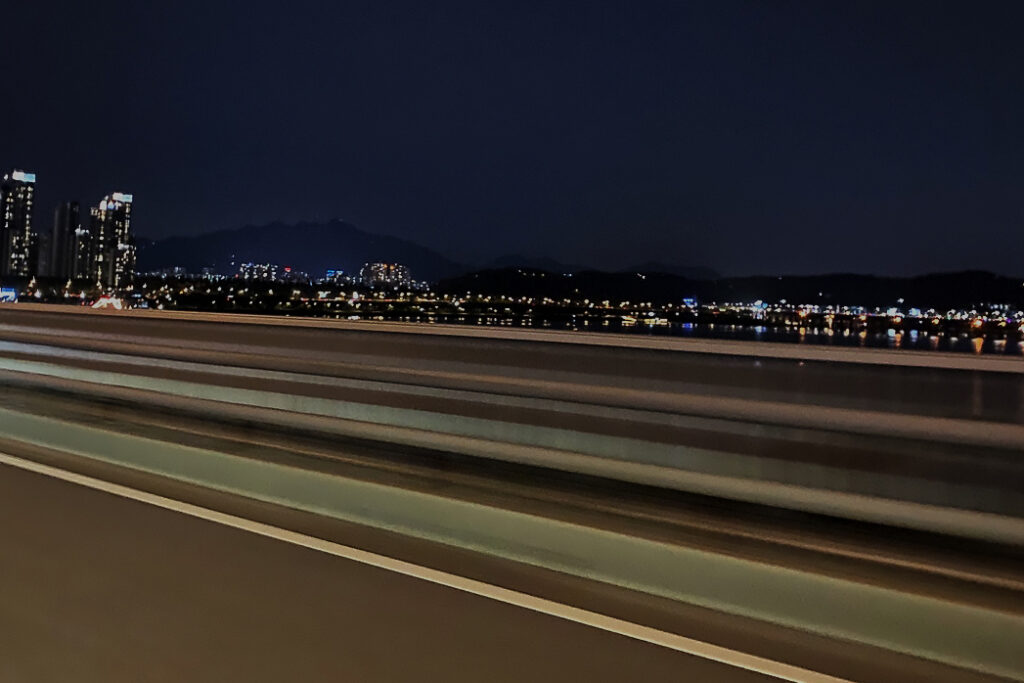
지금은 인류의 큰 전환점과도 같은 시기다. 한 번도 달려보지 않은 여러 갈래의 길에 이정표도 없다. 어느 길을 선택해야 하고, 어떤 속도로 달릴지 매 순간 결정해야 한다. 이런 시기에 디자인 철학을 새롭게 발표한다는 시도 자체가 과감해 보이기도 한다. 물론 그 과감성만큼의 고민과 재고의 시간이 분명 있었다. 기아의 디자인 매니페스토 영상으로 접했던 하비브의 단단하고 차분한 인상대로 그의 말은 정석이었고, 한편으로는 대담했다. OU가 상반된 개념의 창의적 융합을 가리키듯, 하비브는 그야말로 ‘다른 경험’을 줄 수 있는 모빌리티를 꿈꾼다. 그의 말을 빌리자면 “마치 치유되는 경험”과도 같다. 사용자가 평화롭고, 차분하고, 안전하게 움직일 수 있도록 하는 것. 그래서 누구나 자기만의 여정에서 다채로운 감각을 얻으며 목적지에 도착할 수 있게 하는 것. 무엇보다 이 여정에서 디자인이 ‘미래의 시간’을 창조적으로 사유하는 것. 어쩌면 이것이 카 가이즈의 꿈이자 로맨스가 아닐까. 그들과 함께하는 기아의 여정이 오늘 또 다른 내일의 길을 만들고 있다.
Today seems like a great turning point for humanity. There are no milestones in many forking paths that we have never taken. We should decide which path to take and at what speed to drive every minute. It would be a bold initiative to announce new design philosophy at this time. Naturally, Kia has had many years to consider its concerns and reexamine how to be bold in its own right. Just like senior vice president Karim Habib’s solid and calm impression in one of Kia’s brand manifesto films clearly shows, his words capture Kia’s philosophy and were even bold in a sense. As OU refers to the “creative convergence of opposite concepts,” Habib dreams of mobility that can provide a really different experience. According to him, it is like a “healing experience”; to move the user in peace, calmness, and security; and to get everyone where they want to be with a variety of positive feelings on their journey. Most of all, it’s about having designers give more creative thought to the time of the future on this journey. Perhaps these are a person’s dream and romance. Regardless, Kia is creating another path for tomorrow on a journey with him today.
진행·정리 박수지
서울을 기반으로 활동하는 독립 큐레이터. 전시기획사 ‘에이전시 뤄뤼AGENCY RARY’를 운영한다. 독립문화공간 ‘아지트’ 큐레이터, 미술문화비평지 《B-art》 편집팀장, 《2017 제주비엔날레》 큐레토리얼팀 코디네이터, 통의동보안여관 큐레이터로 일했다. 《7인의 지식인》(2020), 《줌 백 카메라》(2019), 《정은영 : 어리석다 할 것인가 사내답다 할 것인가》(2018), 《김정헌X주재환 : 유쾌한 뭉툭》 (2018), 《민중미술2015 : 우정의 외면》(2015) 등을 기획했다. ‘Korea Research Fellow: 10×10’(2018, 2019), ‘두산 큐레이터 워크샵’(2019)에 선정된 바 있다.
Interview & Story Park Suzy
Park Suzy is an independent curator based in Seoul. She runs an exhibition agency called AGENCY RARY. She has worked as a curator at the independent culture space Agit; as editor-in-chief for B-art, a critical journal on arts and culture; a coordinator of the curatorial team of the Jeju Biennale 2017; and a curator for BOAN 1942, an art space in Seoul. She has curated exhibitions such as Seven Intellectuals (2020), Zoom Back Camera (2019), Siren Eun Young Jung: Foolish or Mannish (2018), Kim Jungheun X Joo Jaehwan: Pleasantly Bluntly (2018), and Minjung Art 2015: Freundschaft (2015). Park was also selected for the Korea Research Fellow 10×10 project (2018, 2019) and the Doosan Curator Workshop (2019).